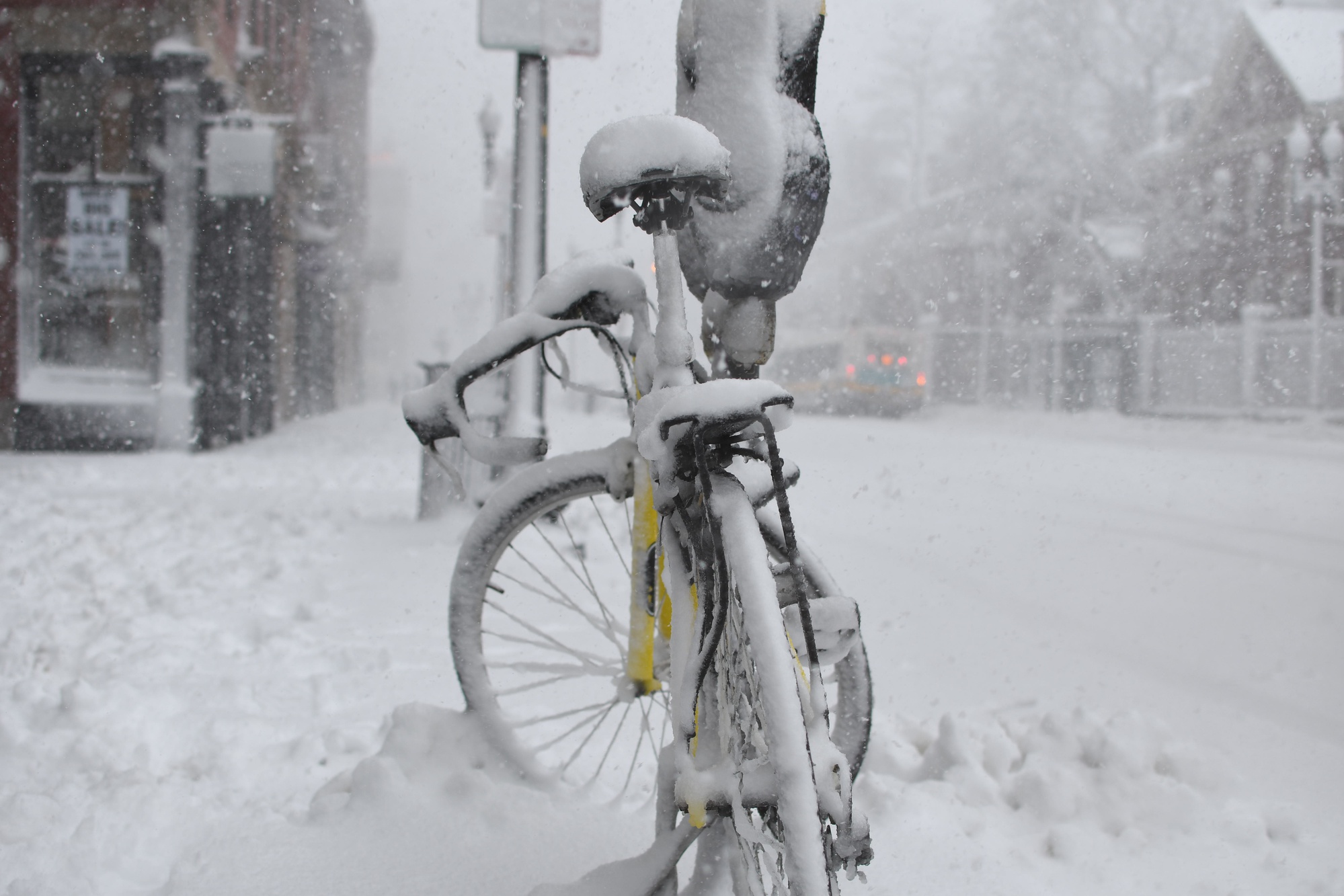
Winter for Cambridge’s Homeless
Piper W. Winkler ’21 suddenly turns to Valerie M. Zhang ’21 and Romil A. Sirohi ’21 in the middle of our interview. “We just got another box of thermals,” she says eagerly to them. Their eyes widen in excitement. Later in the day, the trio will set out on the streets of Cambridge, distributing the warm clothes to Cambridge’s homeless population.
Winkler, Zhang, and Sirohi have only recently begun their expedition to distribute clothing. Their fundraiser began on Jan. 5th, the day after a “bomb cyclone” unleashed 14 inches of snow over Cambridge. To date, it has brought in almost $2,800.
“Five dollars for me might not necessarily be a lot,” Zhang says. “But to other people it can actually be the difference between a few hours inside or outside.”
So far, the project has largely focused on purchasing Subway and Dunkin’ Donuts gift cards for the homeless, thereby providing them with both food and a warm place to sit during the day.
Getting the homeless indoors is a major priority during Cambridge winters. As shelters continue to fill up, their fire codes aggravate the increasingly urgent need for alternative resources.
According to Corey A. Gold ’19, the Administrative Director of the Harvard Square Homeless Shelter (HSHS), HSHS has 24 beds available and five emergency cots, which means that, depending on the day, anywhere between two and 25 lottery numbers may be turned away.
“I’ve had to call people and tell them the news that they haven’t gotten a bed for the night and they’ll have to stay out, and that’s really hard,” says Winkler, who works at HSHS. “[HSHS’s] main concern is space, and that’s not necessarily something we’re poised to help with at this moment. But we can fill the gap [by providing] a warm place to be for a couple hours.”
The efforts of the three freshmen fit into a larger, evolving network of resources that, together, try to keep the homeless population out of the cold.
The Cambridge Warming Center, for example, opened its doors for the first time on January 16th, 2018. Located by Central Square in the basement of the Citywide Senior Center, the city-funded resource serves as an alternative to traditional shelters, which may not be suitable for people with certain mental health conditions.
“Most folks who have spent any time being homeless have some sense of trauma, so it can feel really scary for them to be in a [shelter],” Shelly Chevalier, Planning and Development Manager for the Department of Human Services, says. The Warming Center is designed to be “low-barrier,” Chevalier explains, welcoming those who may be disinclined to seek out shelters for personal reasons.
For instance, Zhang recalls speaking with a homeless person who stated that they did not feel comfortable at shelters after an experience in which their belongings were stolen.
Through the Warming Center, Cambridge hopes to provide an alternative space where people can simply stay warm. Yoga mats are available to rest on, meals are provided, and spaces are not separated by gender, which allows couples to stay together throughout the night, which is not always the case at traditional shelters.
The numbers seem to indicate that the Warming Center has so far been successful in bringing people out of the cold: in the first week of its operation, it served more than 100 unique individuals, with as many as 46 arriving in one night.
According to Bay Cove Human Services, the non-profit organization that operates the center, an initial survey of the visitors indicates that most guests are people who would otherwise not be inclined to go to a shelter. But the center may also wind up serving those who wanted to stay at a shelter, but didn’t lottery in.
“Shelters are really on the cusp of maxing out relative to their capacity, so there’s no question that the secondary purpose for the Warming Center is to serve as some level of overflow when all of the shelters reach capacity,” Chevalier says.
At HSHS, any additional resource is much appreciated. “I do like to think of HSHS as a part of some greater network, some greater jigsaw puzzle,” Ana K. Chaves ‘17, an Administrative Director at the shelter, says. “We are bound by our fire code capacity and we barely meet a fraction of the greater need, but we are fortunate to have all these other providers along with us, that though not connected to us, are contributing to this unified effort to help people stay out of the cold when the weather hits.”
—Magazine writer Sonia F. Epstein can be reached at sonia.epstein@thecrimson.com. Follow her on Twitter @sonia_epstein.


